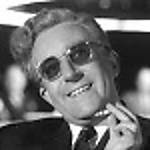hi all,
i was just wondering about the interior colour of an Me109's wheel wells, does anyone know what colour they were painted?
World War II
Discuss WWII and the era directly before and after the war from 1935-1949.
Discuss WWII and the era directly before and after the war from 1935-1949.
Hosted by Rowan Baylis
Interior colour of Me109 wheel wells
Klaus-Adler

Joined: June 08, 2015
KitMaker: 1,505 posts
AeroScale: 193 posts

Posted: Saturday, July 28, 2018 - 09:00 AM UTC
chrism

Joined: January 05, 2012
KitMaker: 160 posts
AeroScale: 156 posts

Posted: Saturday, July 28, 2018 - 09:20 AM UTC
RLM 02 Gray
Posted: Saturday, July 28, 2018 - 09:20 AM UTC
RLM 02, sir.
rochaped

Joined: August 27, 2010
KitMaker: 679 posts
AeroScale: 669 posts
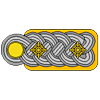
Posted: Saturday, July 28, 2018 - 11:34 AM UTC
Donít forget that inside the wells wall there is a zip locked canvas covering. These (if your model has them, like Eduard has, or some AM stuff) were not 02, but rather a khaki brown of sort.


Posted: Saturday, July 28, 2018 - 02:01 PM UTC
Quoted Text
Donít forget that inside the wells wall there is a zip locked canvas covering. These (if your model has them, like Eduard has, or some AM stuff) were not 02, but rather a khaki brown of sort.

Black and blue canvas were also used.
brekinapez

Joined: July 26, 2013
KitMaker: 2,272 posts
AeroScale: 158 posts

Posted: Saturday, July 28, 2018 - 06:16 PM UTC
Gary -
The DS ones that come with the Dragon E-4 kit have dried out and one broke into 3 pieces in my kit. Do you know offhand if the aftermarket crowd makes a set that might fit? I was still going to try and repair what I have, but I have no guarantee it won't break down further after I've finished the kit.
As you might imagine, that would quite frankly, suck.
The DS ones that come with the Dragon E-4 kit have dried out and one broke into 3 pieces in my kit. Do you know offhand if the aftermarket crowd makes a set that might fit? I was still going to try and repair what I have, but I have no guarantee it won't break down further after I've finished the kit.
As you might imagine, that would quite frankly, suck.
RLlockie

Joined: September 06, 2013
KitMaker: 1,112 posts
AeroScale: 21 posts
Posted: Saturday, July 28, 2018 - 07:14 PM UTC
From what Iíve read, there is a possibility that late war examples were unpainted aluminium, given that the external underside surfaces sometimes were and internal surfaces (other than the cockpit and primed steel components) were left unpainted as a paint-saving measure. That certainly applied to 262s and late 190s.
Evidence welcome as I have a few under construction.
Evidence welcome as I have a few under construction.

goodn8

Joined: October 12, 2008
KitMaker: 709 posts
AeroScale: 651 posts

Posted: Saturday, July 28, 2018 - 07:40 PM UTC
Some previous web researches for my archive showed this:
..."Wheel wells
Now for the area you've been waiting for. Few regulations specific to the wheel well area exist, company and factories instructions usually deciding the matter. In keeping with standard practices as identified above, wheel wells and components should have been RLM 02. This includes tail wheel and nose wheel areas. Main gear and nose wheel struts were painted RLM 02, with the exception of the polished steel oleo area. Shock absorbers were a very dark gray, again with the exception of the polished steel telescopic sections. Cast and stamped wheel hubs were painted in semi-gloss black. Tail wheel hubs were usually unpainted (dark gray), or painted the underside color.
Exceptions
Some aircraft that used 100-octane fuel had the starboard gear strut (and sometimes the cover as well) painted red to distinguish them from other aircraft.
Photos of Bf-109B/C/D/E/F's occasionally show wheel wells painted the same color as the underside.
Photos of Bf-109G/K's indicate the wheel wells and struts were usually RLM 76 (fuselage underside color).
Photos of some Bf-109's show main gear struts painted RLM 66.
Photos of some Bf-109's show main gear struts painted underside color.
Photos of some Fw-190A-4 and later show wheel wells painted underside color.
Photos of some late war Fw-190's show natural metal wheel wells.
Me-262's had main gear bay/cockpit tub underside left in natural metal. However, nose wheel bay and strut were painted RLM 02. Some Me-262's had the main wheel well and/or nose wheel bay painted RLM 76. "
Th mas
mas
..."Wheel wells
Now for the area you've been waiting for. Few regulations specific to the wheel well area exist, company and factories instructions usually deciding the matter. In keeping with standard practices as identified above, wheel wells and components should have been RLM 02. This includes tail wheel and nose wheel areas. Main gear and nose wheel struts were painted RLM 02, with the exception of the polished steel oleo area. Shock absorbers were a very dark gray, again with the exception of the polished steel telescopic sections. Cast and stamped wheel hubs were painted in semi-gloss black. Tail wheel hubs were usually unpainted (dark gray), or painted the underside color.
Exceptions
Some aircraft that used 100-octane fuel had the starboard gear strut (and sometimes the cover as well) painted red to distinguish them from other aircraft.
Photos of Bf-109B/C/D/E/F's occasionally show wheel wells painted the same color as the underside.
Photos of Bf-109G/K's indicate the wheel wells and struts were usually RLM 76 (fuselage underside color).
Photos of some Bf-109's show main gear struts painted RLM 66.
Photos of some Bf-109's show main gear struts painted underside color.
Photos of some Fw-190A-4 and later show wheel wells painted underside color.
Photos of some late war Fw-190's show natural metal wheel wells.
Me-262's had main gear bay/cockpit tub underside left in natural metal. However, nose wheel bay and strut were painted RLM 02. Some Me-262's had the main wheel well and/or nose wheel bay painted RLM 76. "
Th
 mas
masPosted: Saturday, July 28, 2018 - 08:08 PM UTC
Thank you Thomas! I never knew what the red landing gear meant.
Shell, I don't know much about the Dragon 109 at all. Hopefully somebody else out there knows.
Gaz
Shell, I don't know much about the Dragon 109 at all. Hopefully somebody else out there knows.
Gaz
RLlockie

Joined: September 06, 2013
KitMaker: 1,112 posts
AeroScale: 21 posts
Posted: Saturday, July 28, 2018 - 08:52 PM UTC
Radu Brinzan (radubstore.com) makes etched sets including wheel wells for various 109s in 1/32 which include the leather linings. He also makes excellent seatbelts which are (in my opinion anyway) far superior to etched belts in the larger scales (32 and 24).

Shrimpman

Joined: August 14, 2016
KitMaker: 148 posts
AeroScale: 123 posts

Posted: Saturday, July 28, 2018 - 08:59 PM UTC
Hi guys, when we are discussing interior RLM 02 colour, I am quite lost here. Each time I see RLM02 colour, it looks different to me. I mean I am not good at all at spotting differences between colours, but how can this possibly be the same colour? Both are RLM02:
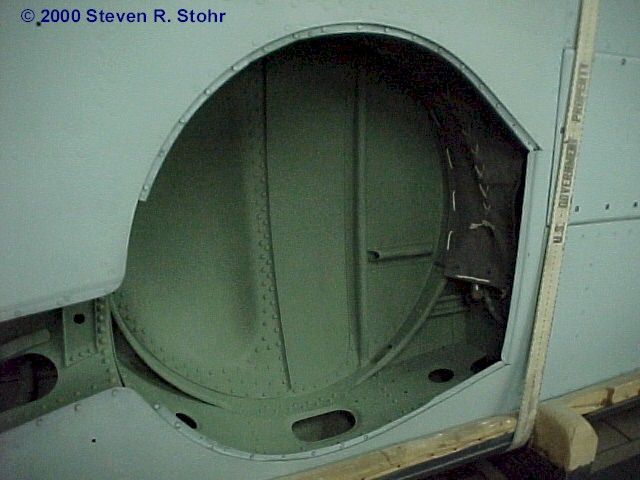
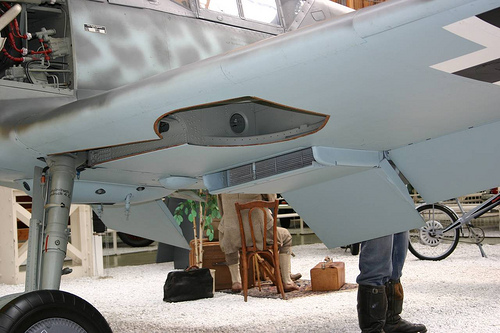
The first one looks clearly greenish, the other one is light grey without a hint of green that I can see. I use vallejo 70.886 to paint RLM02, it is very close to that greenish picture above, but when I completed my Bf 109 last year, using RLM 02/71 camo, I've found out it looks nothing like reference drawings or other people's models.
First picture is my Messerschmitt, the other is someone else's model I found on the internet.
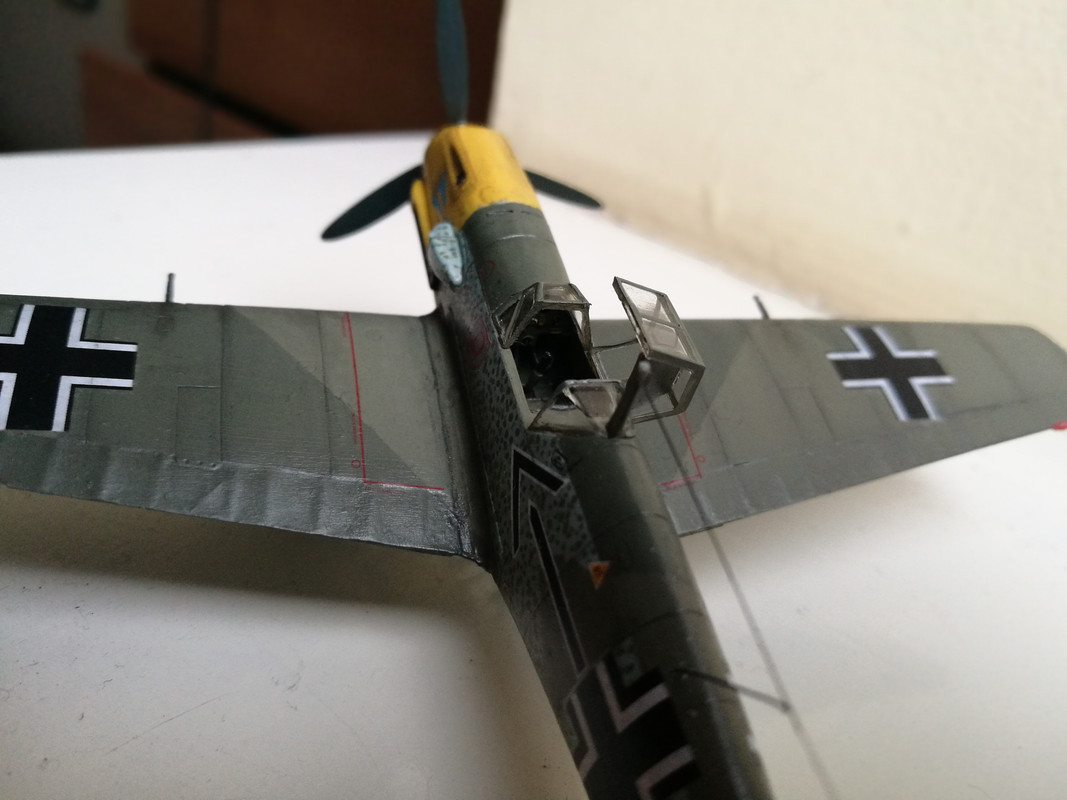

It looks like most people go with that light grey RLM 02. Can anyone shed some light on this please?
(sorry for barging in into Klaus-Adler's topic, but I think it fits into the conversation)


The first one looks clearly greenish, the other one is light grey without a hint of green that I can see. I use vallejo 70.886 to paint RLM02, it is very close to that greenish picture above, but when I completed my Bf 109 last year, using RLM 02/71 camo, I've found out it looks nothing like reference drawings or other people's models.
First picture is my Messerschmitt, the other is someone else's model I found on the internet.


It looks like most people go with that light grey RLM 02. Can anyone shed some light on this please?
(sorry for barging in into Klaus-Adler's topic, but I think it fits into the conversation)

goodn8

Joined: October 12, 2008
KitMaker: 709 posts
AeroScale: 651 posts

Posted: Saturday, July 28, 2018 - 10:20 PM UTC
Well, something more from my archive...
Don't worry about RLM colour modulations, Shrimpman.
These were mainly a reflection of different supplies and the lack of raw material while the war was going on.
..." The colors used by the Luftwaffe were defined by the State Ministry of Aviation ( Reichsluftfahrt Ministerium ), which established a standard for color shades, their production and application. These directives were promulgat ed through a series of service regulations (Luftwaffen Dienstvorschriften) designated L.Dv. 521. The earliest edit ion to survive ( L.Dv. 521/ 1) is dated March 1938 and included a color table ( Farbtontafel) that was to be matched by manufacturers, aircraft repair depots, and front- line units. Other regulations, some of which had been established before the formation of the RLM it self in 1933, limited the number of colors and encouraged production from pigments that could be obtained in Germany . At a time of limited hard
currency, such policies simplified pur chase and st orage, and minimized dependence on im ported raw materials. Paints were supplied by different companies and, although air craft manufacturers could choose which commercial products to purchase, they all were to adhere to these uniform standards, as represented by the Farbtontafel and later by individual paint chips."

Th mas
mas
Don't worry about RLM colour modulations, Shrimpman.
These were mainly a reflection of different supplies and the lack of raw material while the war was going on.
..." The colors used by the Luftwaffe were defined by the State Ministry of Aviation ( Reichsluftfahrt Ministerium ), which established a standard for color shades, their production and application. These directives were promulgat ed through a series of service regulations (Luftwaffen Dienstvorschriften) designated L.Dv. 521. The earliest edit ion to survive ( L.Dv. 521/ 1) is dated March 1938 and included a color table ( Farbtontafel) that was to be matched by manufacturers, aircraft repair depots, and front- line units. Other regulations, some of which had been established before the formation of the RLM it self in 1933, limited the number of colors and encouraged production from pigments that could be obtained in Germany . At a time of limited hard
currency, such policies simplified pur chase and st orage, and minimized dependence on im ported raw materials. Paints were supplied by different companies and, although air craft manufacturers could choose which commercial products to purchase, they all were to adhere to these uniform standards, as represented by the Farbtontafel and later by individual paint chips."

Th
 mas
masbrekinapez

Joined: July 26, 2013
KitMaker: 2,272 posts
AeroScale: 158 posts

Posted: Sunday, July 29, 2018 - 02:19 AM UTC
The problem with looking at images online and/or sharing them is that a lot of things depend on how everyone's monitors are calibrated, without the additional problems of knowing the lighting situations and camera settings used to take that image. In other words, the only way to be 100% sure is to see it in person. Anyone who has worked with editing software like Photoshop can tell about the need for calibration.
Those colors may seem different on your screen, but who knows for sure.A good way to see this is to notice the various TVs on display at any department store; they don't all show the same picture quality.
Those colors may seem different on your screen, but who knows for sure.A good way to see this is to notice the various TVs on display at any department store; they don't all show the same picture quality.

Jessie_C


Joined: September 03, 2009
KitMaker: 6,965 posts
AeroScale: 6,247 posts

Posted: Sunday, July 29, 2018 - 02:32 AM UTC
The other problem with looking at online images is you don't know the exact ambient lighting and what camera the pictures were taken with. Lighting and how the light interacts with the camera's CCD greatly influence the final colours. Greys are especially vulnerable to this effect. You may be seeing the exact same colour in all those pictures, but those taken in 'warm' light will appear to be darker than those taken in 'cool' light.
In the end, pick a colour which looks right to you. You're the final judge of your models and if you'e happy with them, then that's all that matters
In the end, pick a colour which looks right to you. You're the final judge of your models and if you'e happy with them, then that's all that matters


Shrimpman

Joined: August 14, 2016
KitMaker: 148 posts
AeroScale: 123 posts

Posted: Sunday, July 29, 2018 - 08:47 AM UTC
Thank you for the advice! I was starting to wonder if maybe RLM 02 designation changed at some point in time. I can see what you are saying about the light in photos. The picture of my plane that I posted does indeed look much darker than it actually is. I had a particularly bad light that day with very heavy clouds.

bomber14

Joined: February 02, 2015
KitMaker: 330 posts
AeroScale: 286 posts

Posted: Tuesday, July 31, 2018 - 12:40 AM UTC
Quoted Text
The other problem with looking at online images is you don't know the exact ambient lighting and what camera the pictures were taken with. Lighting and how the light interacts with the camera's CCD greatly influence the final colours. Greys are especially vulnerable to this effect. You may be seeing the exact same colour in all those pictures, but those taken in 'warm' light will appear to be darker than those taken in 'cool' light.
In the end, pick a colour which looks right to you. You're the final judge of your models and if you'e happy with them, then that's all that matters
Also those two photos you posted look to be of restored aircraft. who knows if the people who restored it used the right paint formula.
joe

bomber14

Joined: February 02, 2015
KitMaker: 330 posts
AeroScale: 286 posts

Posted: Tuesday, July 31, 2018 - 12:47 AM UTC
Quoted Text
Thank you for the advice! I was starting to wonder if maybe RLM 02 designation changed at some point in time. I can see what you are saying about the light in photos. The picture of my plane that I posted does indeed look much darker than it actually is. I had a particularly bad light that day with very heavy clouds.
if you hadn't said anything shrimpman i would say your model was painted as rlm 74/75. that looks closer to grey-violet.
joe
 |




